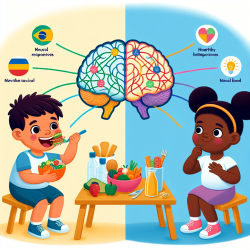Introduction
Understanding how sex differences influence children's eating behaviors is crucial for developing effective interventions to improve dietary habits and prevent obesity. The research article "A Biopsychosocial Model of Sex Differences in Children’s Eating Behaviors" provides a comprehensive overview of how biological, psychological, and social factors contribute to these differences.
Biopsychosocial Model: A Framework for Understanding
The biopsychosocial model integrates biological, psychological, and social factors to explain sex differences in children's eating behaviors. This model highlights how these factors interact to influence food acceptance, intake, and appetitive traits.
Key Findings from the Research
- Food Acceptance and Intake: Studies show that female children generally prefer and consume more fruits and vegetables, while males show a preference for meat and high-fat foods.
- Appetitive Traits: Females often exhibit greater food responsiveness, which may be a stronger predictor of increased weight status compared to males.
- Neural Responses: Neuroimaging studies suggest that females and males have different neural responses to food cues, which may influence their eating behaviors.
Implications for Practitioners
Practitioners can leverage these findings to tailor interventions that consider sex differences in eating behaviors. By understanding the biopsychosocial influences, interventions can be more personalized, potentially improving their effectiveness in promoting healthy eating habits and preventing obesity.
Recommendations for Future Research
Further research is needed to explore the underlying mechanisms of these sex differences and how they interact with other factors such as age and weight status. This will help refine interventions and improve outcomes for children of all genders.
Conclusion
The biopsychosocial model provides a valuable framework for understanding sex differences in children's eating behaviors. By considering these differences, practitioners can develop more effective interventions that promote healthy eating habits and prevent obesity in children.
To read the original research paper, please follow this link: A Biopsychosocial Model of Sex Differences in Children’s Eating Behaviors










